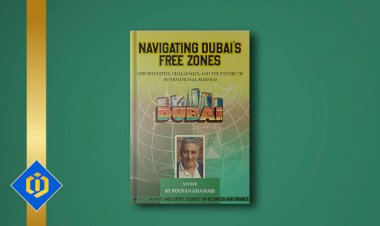Dance of Defiance: Maduro's "No Crazy War" Groove Goes Viral Amid U.S. Warship Shadow

In the sweltering heart of Caracas, where palm trees sway against a skyline of revolutionary murals, Venezuelan President Nicolás Maduro transformed a Student Day rally into an impromptu dance floor on November 21, 2025—a viral spectacle of jumps, arm pumps, and infectious chants that has captivated (and confounded) the world. Swaying to an electronic remix of his own voice crooning "No war, no crazy war, yes peace," the 62-year-old socialist strongman urged young crowds to "connect with U.S. students" and broadcast a message of dialogue over destruction, all while U.S. warships loomed off the Caribbean coast. As tensions escalate with Washington—fueled by sanctions, military maneuvers, and whispers of covert ops—Maduro's boogie has become both a shield of sovereignty and a punchline for critics, reminding global audiences that in Venezuelan politics, the revolution always has a beat.
The Remix That Rocked the Palace: From Speech to Salsa Anthem
It unfolded at the Miraflores Palace, ground zero for Maduro's firebrand oratory. Flanked by cheering students waving yellow Chavista flags, Maduro took the stage for what started as a standard Student Day address—a nod to youth as the vanguard against "imperialist threats." But as the sun dipped low, the DJ dropped the track: an AI-fueled electronica banger looping Maduro's gravelly timbre in English and Spanish—"Dialogue yes, peace yes, respect yes. War no, no crazy war, never war." The president didn't miss a step. He jumped, he shuffled, he fist-pumped like a man half his age, pulling the crowd into a rhythmic roar that echoed through Caracas's streets.
Videos exploded across social media within hours, amassing 15 million views by Sunday night. "Maduro's got moves Trump could only dream of," quipped one X user, while another dubbed it "the anti-war TikTok that slaps." It's not Maduro's first spin on the dance floor—recall his 2024 salsa salsas or the John Lennon "Imagine" sing-along that drew 10 million streams—but this "No War" remix hits different. Timed for Thanksgiving week, it doubles as a direct appeal to American youth: "Tell your student movements: Stop the war. Venezuela wants peace." State media framed it as unfiltered defiance, a symbol of "joyful resistance" against what Maduro calls Washington's "genocidal siege."
War Drums in the Distance: U.S. Buildup Meets Maduro's Groove
The levity jars against the grim backdrop. Since late August, the U.S. Southern Command has amassed a formidable armada in the Caribbean: the USS Gerald R. Ford carrier strike group, combat jets, and 5,000 troops ostensibly for "counter-narcotics ops." But Venezuelan officials scoff, labeling it a "provocation fleet" aimed at regime change. On November 24, the State Department escalated, designating the Cartel de los Soles—a shadowy military-linked drug network allegedly helmed by Maduro and top brass—as a Foreign Terrorist Organization. "This unlocks new tools to dismantle their narco-terror empire," barked Pentagon chief Pete Hegseth, hinting at everything from asset freezes to "targeted disruptions."
Maduro's retort? A mobilized military parade and vows of "another Gaza, another Afghanistan, another Vietnam" if crossed. Yet amid the saber-rattling, the dance serves as soft power jujitsu: portraying Caracas as the cool, unbowed underdog against a "warmonger" Washington. Analysts like The Tico Times' Maria Esperanza note it's classic Maduro theater—blending spectacle with strategy to rally domestic support and troll the Trump White House. "He's channeling Chávez's charisma," she says, "turning fear into fiesta."
Viral Vortex: From Memes to Mockery, the World Weighs In
The clip's virality is a double-edged sword. On TikTok and X, it's spawned a flood of edits: Maduro grooving with AI-generated cameos from Elon Musk and Taylor Swift, captioned "When the sanctions drop but the bass doesn't." Supporters hail it as "revolutionary rhythm," a morale booster for a nation grappling with 150% inflation and mass exodus. Critics, from Fox News pundits to Venezuelan exiles, brand it tone-deaf buffoonery: "While his people starve, he parties," sneered one Miami-based dissident.
Internationally, reactions ripple. Iran's ayatollahs praised the "peace offensive," while Russia's RT looped it as "anti-imperialist art." Even in the U.S., anti-war activists like Code Pink shared it with captions urging "youth-to-youth solidarity." But back home, not all cheers: opposition leader María Corina Machado dismissed it as "clown show distraction" from bread lines and blackouts.
Maduro's Musical Legacy: From Salsa to Sanctions Survival
This isn't Maduro's debut as dance-floor diplomat. The former bus driver and Chávez protégé has long weaponized performance—singing rancheras at rallies, breakdancing during blackouts—to humanize his rule amid economic Armageddon. Remember the 2023 "Salsa for Sovereignty" marathon, or the 2024 Lennon cover that trended amid election fraud claims? Each groove cements his image as the everyman strongman, defiant against "Yankee vultures."
Yet as U.S. options multiply—from airstrikes on narco-sites to cyber ops undermining his grip—the dance feels like whistling in the dark. With Venezuela's oil fields contested and allies like Cuba and Iran stretched thin, Maduro's mobilization calls for 300,000 reservists ring hollow without cash. The remix, observers say, is his bid to export joy where bullets loom— a viral vaccine against despair.
Harmony or Hoax? The Rhythm of Resistance
As the "No War" track tops Venezuelan Spotify charts, Maduro's message pulses global: peace through playlist, not pipeline. But with Hegseth's "options" and Trump's Truth Social taunts ("Maduro dances while Venezuela starves!"), the beat quickens toward confrontation. In Caracas's humid nights, where reggaeton blares from corner speakers, one truth endures: Maduro's moves may charm the crowd, but they won't deter destroyers. The dance goes on—but for how long before the music stops?

 content-team
content-team 


















